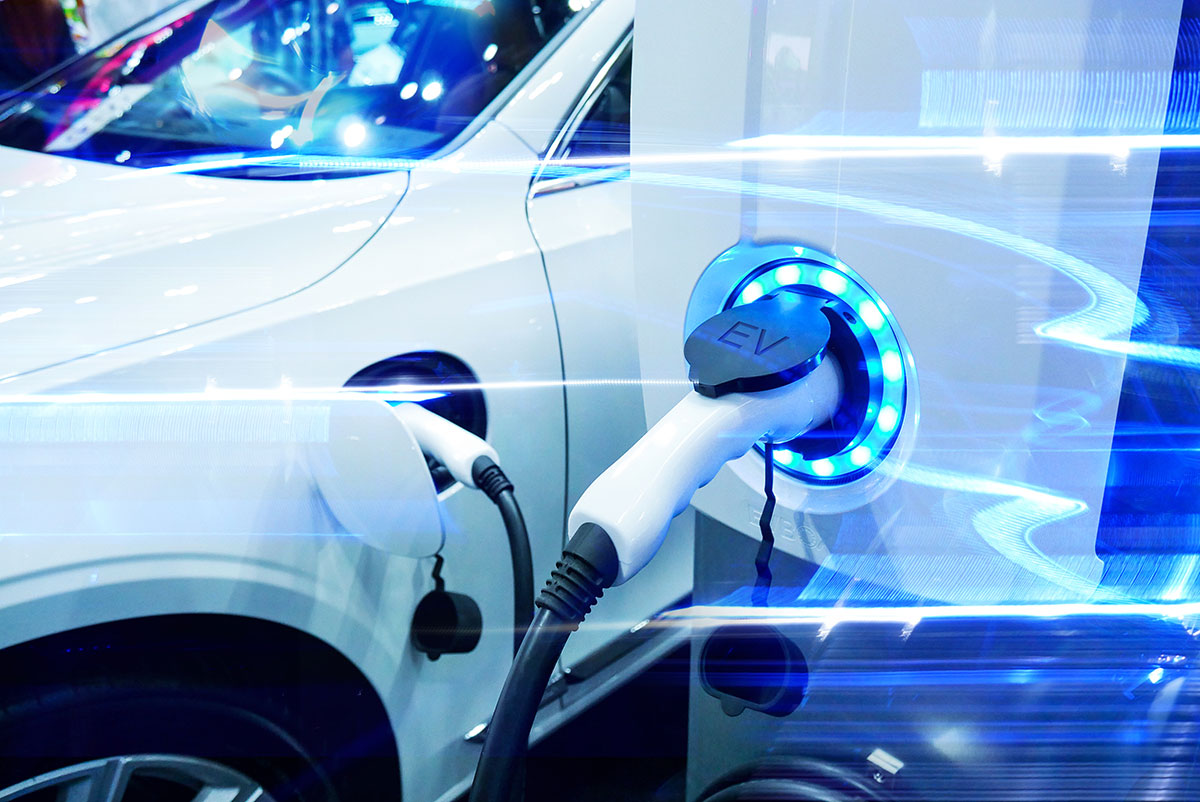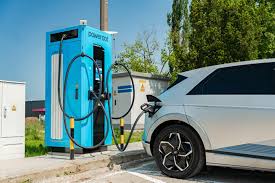The Future of Autonomous Vehicles: How Self-Driving Cars Are Changing Transportation

Introduction
Autonomous vehicles (AVs), also known as self-driving cars, are poised to revolutionize the way we travel, reshaping the automotive and transportation industries. With advancements in artificial intelligence (AI), machine learning, and sensor technology, AVs are becoming a reality that promises to improve road safety, reduce traffic congestion, and offer new mobility solutions for people with disabilities. In this article, we explore the future of autonomous vehicles, their potential benefits, challenges, and the impact they will have on society.
1. What Are Autonomous Vehicles?
- Definition of Autonomous Vehicles
- Autonomous vehicles are vehicles that are capable of operating without human intervention. These vehicles rely on a combination of sensors, cameras, radar, and AI software to navigate roads, interpret their surroundings, and make decisions in real-time.
- The level of autonomy in AVs is classified into six levels, from Level 0 (no automation) to Level 5 (full automation), as defined by the Society of Automotive Engineers (SAE). At Level 5, the vehicle can drive itself in any environment without the need for a human driver.
- Key Technologies Behind Autonomous Vehicles
- Sensors: AVs use various sensors, including LIDAR (Light Detection and Ranging), radar, ultrasonic sensors, and cameras, to detect objects and map the environment around the vehicle. These sensors work together to create a comprehensive view of the vehicle’s surroundings, enabling it to make informed decisions.
- Artificial Intelligence and Machine Learning: AI and machine learning algorithms are responsible for processing the data gathered by the sensors and making decisions about speed, direction, and maneuvering. These technologies allow AVs to learn from experience, continuously improving their performance.
- Connectivity: Autonomous vehicles also rely on vehicle-to-everything (V2X) communication, which allows them to communicate with other vehicles, infrastructure, and pedestrians to improve safety and coordination.
2. How Autonomous Vehicles Will Change Transportation
- Improved Road Safety
- Reduction in Accidents: Human error is the leading cause of most traffic accidents, including collisions, pedestrian fatalities, and driving under the influence. AVs have the potential to significantly reduce accidents by eliminating human errors, such as distracted driving, speeding, or fatigue.
- Predictive Technology: Autonomous vehicles can predict and react to potential hazards more quickly than human drivers. They can detect obstacles, anticipate traffic changes, and respond faster to emergency situations, improving overall road safety.
- Reduction in Traffic Congestion
- Optimized Traffic Flow: Autonomous vehicles can communicate with each other to coordinate their movements, reducing the likelihood of traffic congestion. For example, AVs can maintain optimal speeds, avoid unnecessary lane changes, and adjust their routes based on real-time traffic conditions.
- Platooning: In the future, fleets of autonomous trucks and vehicles may travel in “platoons,” where multiple vehicles travel closely together in a coordinated manner, reducing road congestion and improving fuel efficiency.
- Enhanced Mobility for All
- Accessibility for Disabled Individuals: Autonomous vehicles have the potential to provide greater mobility for individuals with disabilities or those who cannot drive due to age, health, or other factors. AVs can offer a more inclusive transportation option, allowing people to maintain independence without relying on others for transportation.
- Shared Mobility: Autonomous vehicles may also lead to the rise of shared mobility services, where self-driving cars are used for ride-hailing, carpooling, and public transportation. This could reduce the need for private car ownership and create more affordable and efficient transportation options.
- Environmental Benefits
- Reduced Carbon Emissions: Autonomous vehicles are expected to be electric, contributing to reduced carbon emissions and better air quality. EVs and autonomous driving systems will work together to create a more sustainable transportation system.
- Energy Efficiency: AVs can optimize their driving patterns to improve fuel efficiency, such as minimizing idling times, driving at optimal speeds, and using regenerative braking to recharge the vehicle’s battery.
3. The Challenges of Autonomous Vehicles
- Technological and Safety Challenges
- Sensor Limitations: While AVs rely on a variety of sensors to navigate the world around them, these sensors can sometimes be limited in extreme weather conditions, such as heavy rain, snow, or fog. Improving the reliability of these sensors in adverse conditions is a significant challenge.
- Cybersecurity Risks: Autonomous vehicles rely heavily on software and connectivity, which makes them vulnerable to cyberattacks. Ensuring that AVs are secure from hacking and other cyber threats is critical to their widespread adoption.
- Regulatory and Legal Issues
- Regulations: Governments around the world are still developing regulations and standards for autonomous vehicles. Questions about liability, insurance, and traffic laws need to be addressed before AVs can be integrated into public roadways.
- Legal Frameworks: In the event of an accident involving an autonomous vehicle, determining liability is a complex issue. Should the manufacturer, software developer, or vehicle owner be held responsible? Developing clear legal frameworks for AVs is essential to avoid legal complications.
- Public Trust and Acceptance
- Fear of the Unknown: Many people are still skeptical about the safety and reliability of autonomous vehicles. Despite promising technological advancements, there is a general fear of relinquishing control of the vehicle to a machine, especially when it comes to navigating complex traffic situations or unexpected road hazards.
- Acceptance of AVs: Overcoming public concerns and building trust in autonomous vehicles will require extensive testing, transparency, and education. Demonstrating the safety and reliability of AVs will be crucial to their mass adoption.
- Ethical Dilemmas
- Moral Decision-Making: One of the most controversial aspects of autonomous vehicles is their ability to make moral decisions in emergency situations. For example, if a self-driving car is faced with an unavoidable accident, should it prioritize the safety of the passengers or pedestrians? These ethical dilemmas raise questions about how AVs should be programmed to make decisions that align with societal values.
4. The Future of Autonomous Vehicles
- Full Autonomy (Level 5)
- While most autonomous vehicles today are still in the testing phase and operate at lower levels of automation, the future of AVs lies in achieving full autonomy (Level 5). Level 5 vehicles will be capable of driving in any environment without human intervention, providing complete freedom for passengers to engage in other activities during their commute.
- Full autonomy will open up new possibilities for transportation, including the use of AVs for long-distance travel, deliveries, and other logistics applications.
- Integration with Smart Cities
- Autonomous vehicles will likely be integrated into smart cities, where infrastructure, such as traffic lights, road signs, and parking meters, communicate with AVs to optimize traffic flow and improve urban mobility.
- In smart cities, AVs can work in tandem with other connected devices, such as electric scooters, bikes, and public transport, to create a seamless and sustainable transportation ecosystem.
- The Role of Artificial Intelligence and Machine Learning
- As AI and machine learning continue to evolve, autonomous vehicles will become more intelligent and adaptable. Future AVs will be able to better predict traffic patterns, anticipate road hazards, and make more complex decisions based on real-time data.
- Machine learning algorithms will allow AVs to continuously improve their performance by learning from millions of miles of driving data, making them more reliable and efficient over time.
- Autonomous Delivery and Cargo Transportation
- Beyond personal transportation, autonomous vehicles will play a key role in the future of logistics and cargo transportation. Self-driving trucks and delivery drones are already being tested for use in shipping goods, reducing the need for human drivers in long-haul transportation.
- The widespread use of autonomous delivery vehicles will reduce delivery times, lower transportation costs, and streamline supply chains.
5. Conclusion
The future of autonomous vehicles is filled with possibilities that could transform the way we live and travel. While there are still many challenges to overcome, including technological, regulatory, and ethical issues, the potential benefits of AVs—such as improved safety, reduced traffic congestion, enhanced mobility, and environmental sustainability—make them a crucial part of the future of transportation. As technology advances and society becomes more accustomed to autonomous systems, self-driving cars are likely to become a common sight on our roads, reshaping the automotive industry and urban mobility for generations to come.





